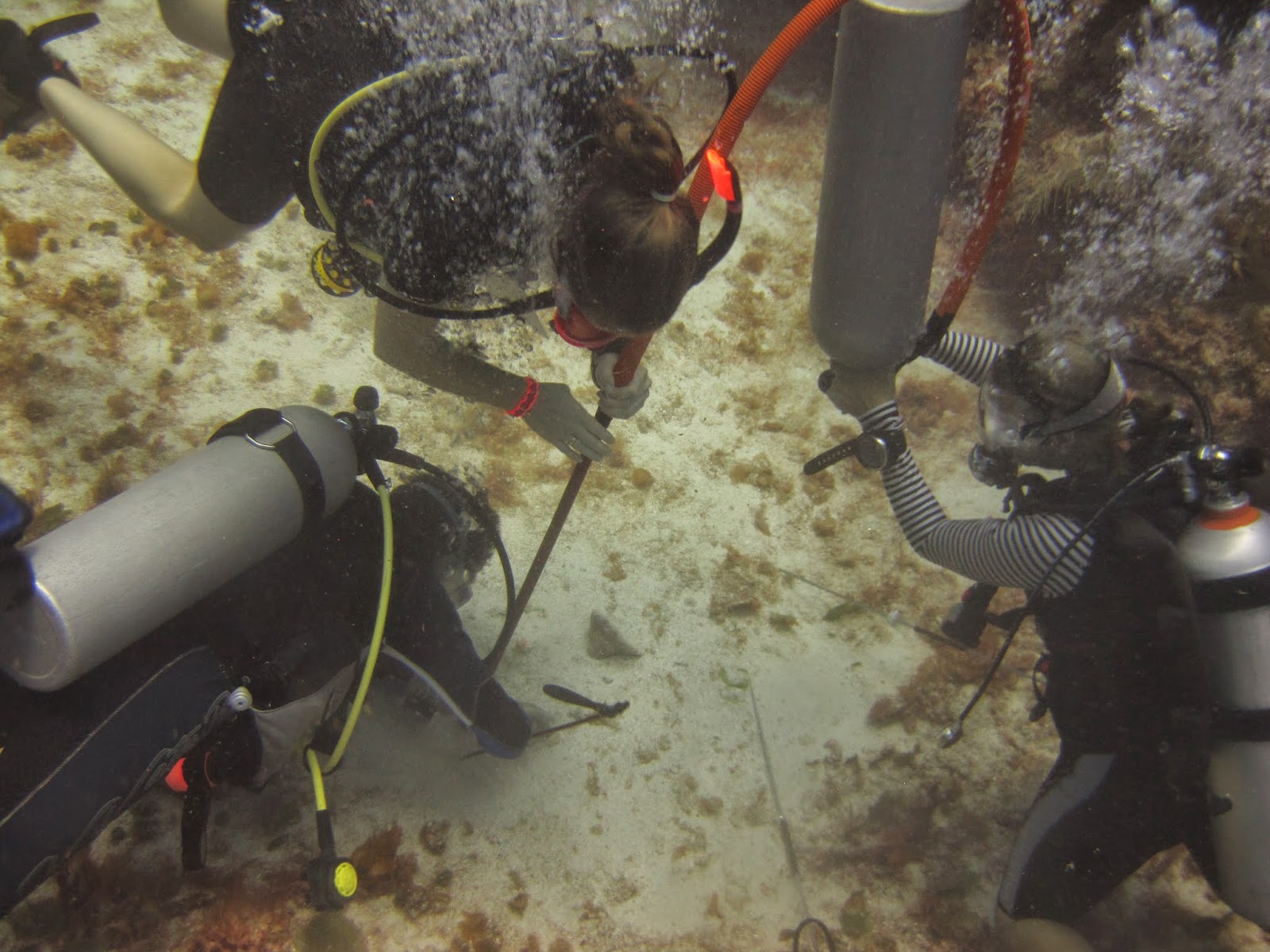Last year I came to Akumal for the first time. An old high school friend of mine was working toward his master diver certification, and he invited his diver friends from around the US to come down to Mexico and dive with him. Not only was I in need of a vacation; it had been two years since I had last sought the solace that nothing but the ocean can give me.
The first day and even well into the second, I could not believe I was really here, walking along sandy paths and coral walkways with the warm ocean breeze. Once I plunged into the water backwards off the edge of the dive boat and could hear nothing but the sound of my body inhaling and exhaling did I finally arrive fully in Akumal. I was underwater, drifting slowly downward, willing myself closer to the coral seascape below. At peace and filled with wonder. Surrounded by delicate fans of purple lace, velvet pillows in green and blue, iridescent creatures dressed in the deepest and richest of hues. My happy place. At last.
During that seven-day vacation, I dove Motorcycle Reef, Las Esponjas, Las Redes, and La Tortuga, each with its own signature seascape, each one magical in its own right. I felt alive and returned to my normal life on land with more energy than I had felt in a long time. Recharged. Renewed. Reinvigorated.
So nine months later when my friend posted another call for divers to join him in Akumal saying that for a special project he needed three or four science divers over the next few months for five to seven days, I responded immediately, instinctively. I may have landed a career in higher education administration, but I have not been able to shake my dream of becoming a master diver and working to protect and conserve coral reefs, a dream that began fifteen years ago when, as a newly certified open water diver, I discovered the majestic Great Barrier Reef.
He explained that the diving would involve mapping and gridding the bay, conducting population studies, and analyzing the marine environment for the potential to regrow and repopulate the reef, which made perfect sense to me. When I had last seen him, he had shared with me his ideas about civilian divers augmenting the workforce of research teams already collecting reef data. More people gathering more information would help advance the evaluation of the reef’s health and the sharing of that information with communities whose livelihood depends on Akumal Bay and their ability to attract tourists. He explained furthermore that the dives would focus on what James Byrne, marine biologist for The Nature Conservancy, aptly calls staghorn and elkhorn coral, “
the girders and I-beams of reefs that provide critical fish habitat”[i].
It is now Day 8 of my working vacation, and this experience has been more than I could have ever anticipated. The work of measuring salinity, pH and ammonia levels, noting the depth, water temperature, and dimensions of both healthy and unhealthy stands of staghorn coral is challenging. I have never cared so much about my trim, about my ability to maintain neutral buoyancy underwater so that I can take a clear picture of my fellow science divers assessing the marine environment.
I have seen and documented the underwater tourist spots, coral abundant with life.
I have also seen and documented the places where tourists don’t go: the underwater wastelands. The devastation is appalling.
A field of soldiers who’ve fallen in battle comes to mind, an unnatural and forsaken graveyard.
I have felt discouraged, hopeless: coral reefs around the world are dying.
The Great Barrier Reef has shrunk by fifty percent in the past three decades[ii]. But I also feel empowered. My two-week experience here is a trial run for a new dive package, Adventure Akumal Science Diver Package. Using the lessons learned from this pilot and with support from the community, certified divers living in or vacationing at Akumal will be able to apply their skills and their passion for the ocean directly toward helping rebuild the reef. Like me they will learn many important things:
- Fifty percent of the Mesoamerican Barrier Reef has died in the last twenty years.
- Staghorn and elkhorn coral, both listed as threatened under the Endangered Species Act[iii], can be raised like plants in a nursery.
- Reversing or mitigating the stress caused by tourism is possible through action, education, and awareness.
- Projects like this—Reefscapers in the Maldives[iv] is a great example—have been successful all over the world, replenishing the coral that serve as protective havens for baby fish making it possible for fish to thrive and repopulate the ecosystem at healthy, balanced levels.
- Collecting data, a first step toward rehabilitating the reef ecosystem as a whole, can be done at a faster rate with civilian divers augmenting the work being conducted by coral scientists and researchers.
We hope to identify staghorn and elkhorn coral that are resilient and managing to survive in the conditions that have been created by increasing numbers of people using the bay as a source for food, recreation, and knowledge—it is after all equal parts farm, playground, and classroom. The Akumal Coral Transplanting Project, beginning with reef building coral, is working to rehabilitate the reef ecosystem as a whole.
Anyone can participate in the Akumal Coral Transplanting Project and give back to this special place that provides sustenance, solace, and scholarship. Camera footage from the pilot dive experience will be shown at a fundraising event on Superbowl Sunday at
Lol-Ha. Proceeds will go towards the Akumal Transplanting Project, an initiative of
Hotel Akumal Caribe with
Centro Ecologico Akumal.
[i] http://www.nature.org/ourinitiatives/regions/northamerica/unitedstates/florida/howwework/stimulating-coral-restoration.xml accessed on January 20, 2014.
[ii] http://www.huffingtonpost.com/2012/10/02/great-barrier-reef-decline_n_1931924.html accessed on January 20, 2014.
[iii] http://www.noaanews.noaa.gov/stories2006/s2627.htm accessed on January 21, 2014.
[iv] http://livingvalues.fourseasons.com/reviving-coral-reefs-in-the-maldives/ accessed on January 20, 2014.































